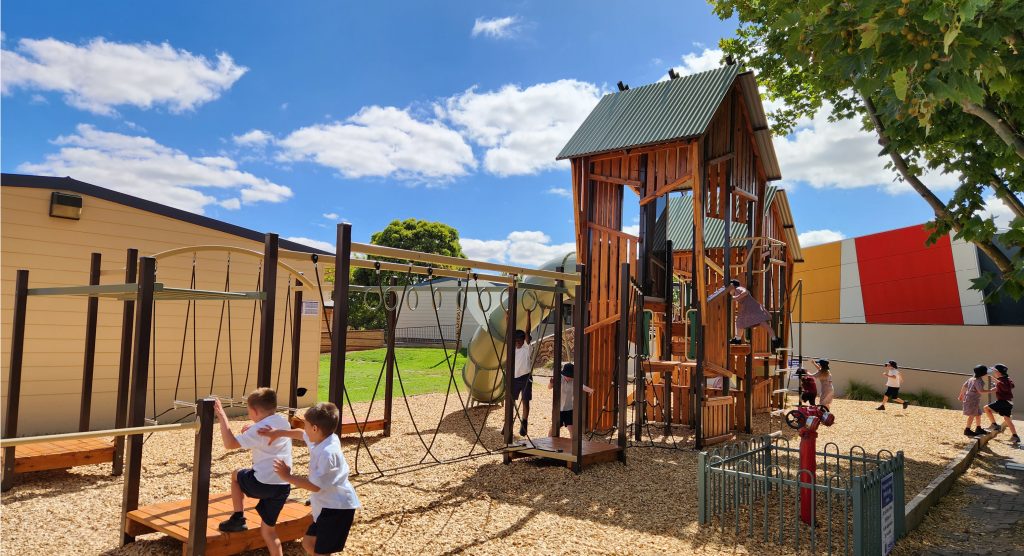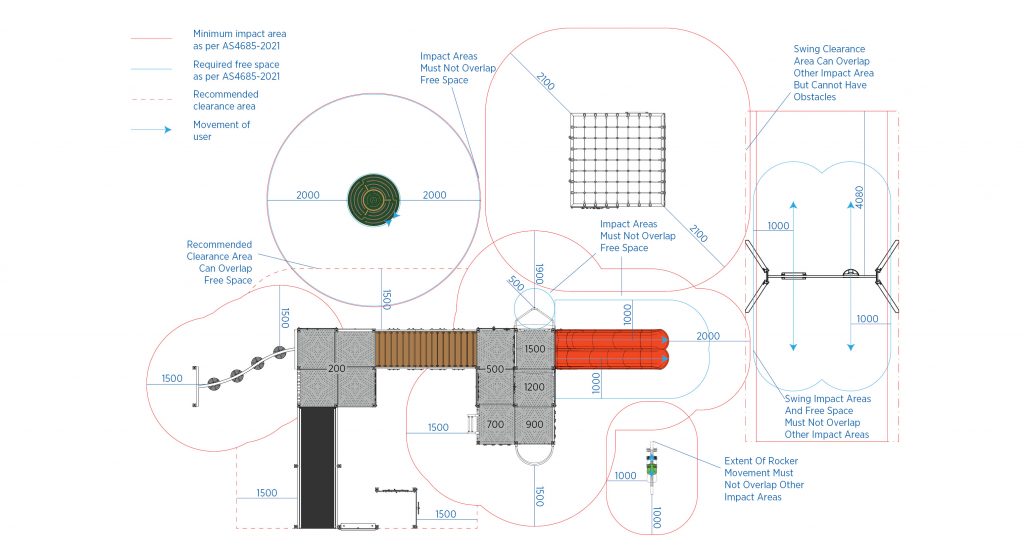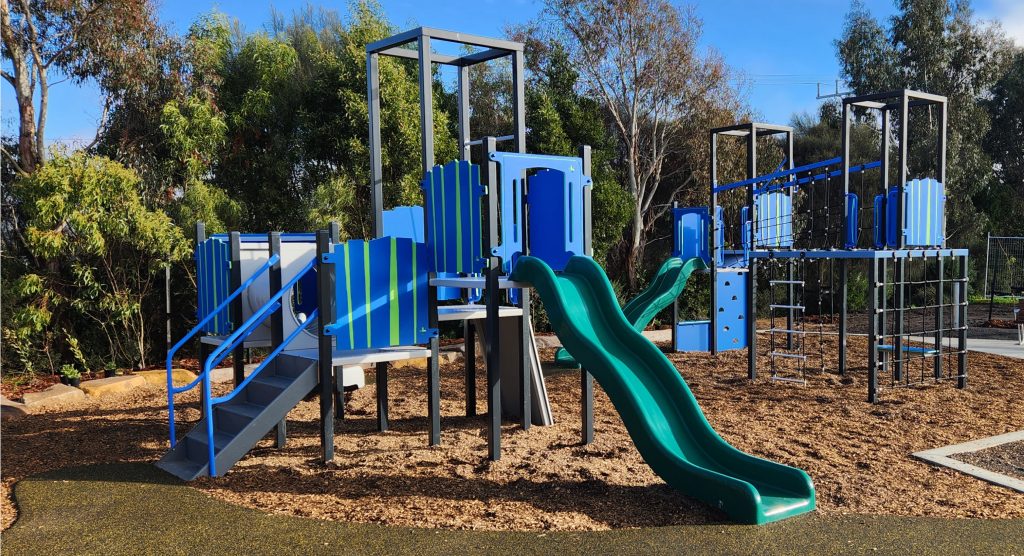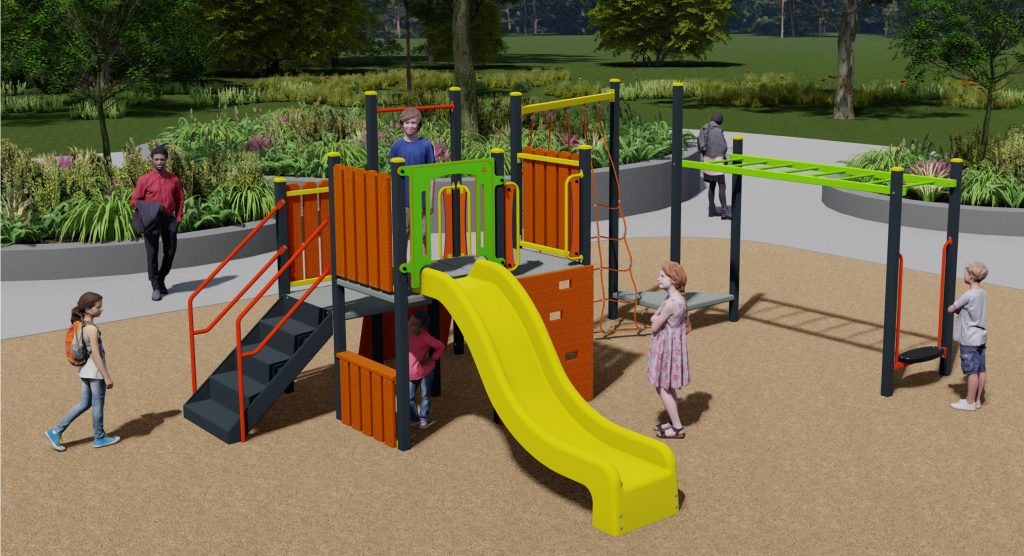Product added to your enquiry
Unlocking the Secrets of Successful Playground Design Webinar Summary
Did you catch our Unlocking the Secrets of Successful Playground Design webinar? If not, don’t worry – we’ve got you covered. Here’s a quick summary of all the topics discussed with our team of playground design experts.
Introduction
In this webinar, we’ll delve into the complex world of playground design, focusing on creating projects that blend form and function effectively. Our goal is to help you make informed decisions that benefit the communities these playgrounds serve.
We’ll cover four key areas of playground design, including tailored designs for specific user groups, an overview of playground Standards, best practice principles for equipment and play spaces, and inspiring design examples showcasing the balance between aesthetics and play value.

Understanding the user profile
Playgrounds are essential for children’s physical, social, and cognitive development. As designers, we aim to create engaging, safe spaces that foster imagination and community. Understanding the user profile is key to successful playground design.
As playground design trends towards intricate detail and seamless integration with the environment, schools and community playgrounds face the challenge of optimizing play value within limited time frames. Play equipment selection is crucial for matching age groups’ capabilities and maintaining engagement, offering a variety of challenges to prevent children from losing interest. Multi-age playgrounds must cater to diverse users with age-appropriate zones and a mix of accessible and challenging elements.
Offering a variety of play types like sliding, climbing, balance, and overheads is crucial for physical development. Including activities such as trampolines, carousels, swings, rockers, and flying foxes enhances the play experience. Incorporating elements like shop counters, cubbies, voice tubes, and activity panels promotes cognitive and social skills. Equipment should cater to all abilities, with ground-level activity panels and entry ramps for accessibility, ensuring inclusive play for all children.

Applying playground standards
A playground should not only be visually appealing, fun, and challenging, but it is critical that it also complies with relevant Australian Standards to ensure the safety and well-being of the children who will use it. By understanding the importance of maintaining adequate clearances and carefully placing equipment, designers can create a playground that is both exciting and safe.
The solid red line on our plans indicates the minimum impact area as per AS 4685:2021, which is the area that a user could fall onto if they were to fall from the equipment. It must be free of all obstacles and have an impact-attenuating surface such as mulch, sand or rubber. The size of the impact area varies according to the free height of fall a user could fall from. Our plans have the required areas already worked out to make it easy for designers to place equipment. Non-moving play items with a free height of fall less than 600mm do not require an impact area, but we typically recommend that at least 1500mm is allowed anyway, and this recommended area is shown as a dashed red line. The blue line indicates the required free space as per AS 4685:2021, which is the area taken up by the user undergoing forced movement.

Entrapments in playground design can lead to serious injuries or death. Designers must carefully consider equipment placement to avoid potential hazards. Modular playground systems like the adventure+ system ensure adherence to safety standards, even with custom features. Prioritizing safety without compromising creativity or aesthetics is key in playground design.
Undersurfacing specifications are crucial in playground design, as Australian Standards dictate required depths based on equipment fall height. Suppliers can advise on depths for unitary surfacing like rubber or loose fill materials. Loose fill undersurfacing must be installed at least 300mm deep to allow for compaction over time, ensuring compliance and safety.

By carefully considering these factors and ensuring adherence to the Australian Standards, playground designers can create exceptional spaces that benefit communities for years to come. A well-designed playground not only provides a safe and engaging place for children to play but also contributes to the overall health and happiness of the community. As experts in playground design, it is our responsibility to unlock the secrets of successful design, thereby helping clients to ensure every child has access to a playground that is safe, compliant and promotes their development and well-being.
Playground design best practice
When it comes to designing a playground, there are several other important factors that must be taken into consideration in addition to complying with the requirements of the Australian Standards. These unwritten best practice principles are key to a successful playground design.
Strategic placement of equipment is key for both safety and functionality. Ensure dynamic elements are positioned thoughtfully to prevent congestion and potential conflicts. Categorize play items based on age groups to enhance the user experience and supervision, fostering a sense of security and inclusivity for younger children.
For optimal supervision and safety, position junior equipment away from hazards like roads and parking areas. Additionally, placing slides between the south and east can reduce sun exposure and the risk of burns, while utilizing natural shade from existing trees offers a cost-effective solution.

Incorporate All Abilities Access to create an exceptional play space design, offering access for users with limited mobility in play activities. Avoid dead space in the design to streamline the flow and functionality of the area, ultimately enhancing the user experience and minimizing unnecessary costs.
When designing play units, prioritize creating refuge areas on platforms to minimize conflicts. Limiting overhead activities, such as Monkey Bars, to one per platform can prevent collisions and enhance safety.

Consider roof styles and their placement in relation to other components to prevent unintended access. For instance, be cautious when including roofs like Skillions, as they may inadvertently provide climbing opportunities for users.
By following these design principles, you can create a playground that is not only safe and functional but also engaging and inclusive for all users.
Aesthetics and play value
Designing a playground requires a balance between play value and aesthetics, considering children’s needs and interests to keep them engaged and challenged.
Incorporating vibrant and contrasting hues can instantly transform a playground into a visually captivating space, impacting children’s moods and emotions. By carefully selecting a harmonious color palette, designers can create a stimulating and inviting atmosphere that caters to different play experiences.

Mixing materials like steel and timber can enhance the architectural elegance of a playground while preserving its play value. For example, timber slat panelling can greatly impact the overall look and feel of a play unit.
Constraints like limited space or resources in playground design can spark imaginative play, turning a simple tower into a majestic castle, a futuristic spaceship, or a cozy tree house. Imagination engages children in endless possibilities, unlocking extraordinary adventures and boundless creativity.
By considering both play value and aesthetics, playground designers can create visually stunning spaces that not only captivate but also foster holistic development in children. The combination of engaging play elements, thoughtful design, and imaginative enhancements results in playgrounds that become cherished community assets, providing children with countless opportunities for growth, discovery, and joy.

The process of designing a playground is a complex one that requires careful consideration of many factors. While undoubtedly compliance with the Australian standards is paramount, it can be seen from what we have covered there is so much more than mere compliance that needs to be taken into account. From equipment positioning to slide direction, from age-appropriate sections to user supervision, every detail plays a crucial role in creating a safe and enjoyable space for the community that is both visually appealing and functional.
With so many things to think of and concepts to apply, relying on an experienced designer who can unlock these secrets of playground design will set your project on the path to a successful outcome for all stakeholders.